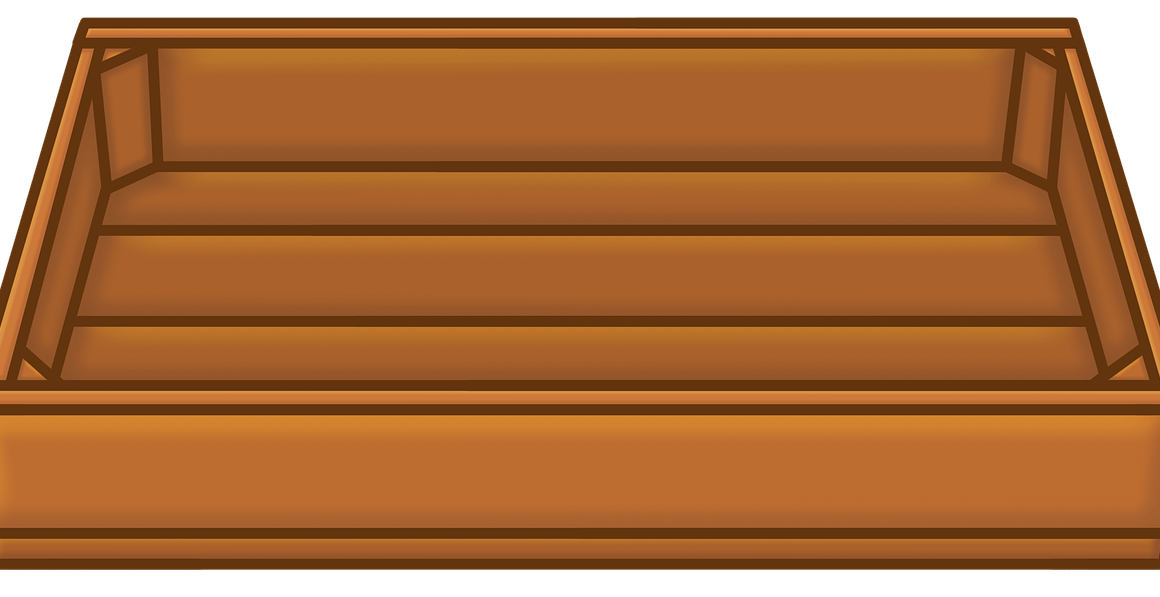Maintaining the durability of your crates is vital to ensure their longevity and optimal performance. By implementing proven maintenance tips, you can keep your crates in top-notch condition, saving you time and money in the long run. From inspecting for damages to cleaning and organizing, this article will provide you with essential advice to maximize the lifespan of your crates and make the most out of your storage and transportation solutions. So, let’s get started on preserving the durability of your crates for years to come!

This image is property of images.unsplash.com.
Cleaning and Inspection
Remove any debris
To ensure the longevity of your crates, it is important to regularly clean and inspect them. Begin by removing any debris or dirt that may have accumulated both inside and outside the crates. This will not only keep them looking neat and professional but also prevent any potential damage caused by sharp objects or abrasive materials.
Use a mild detergent
After the debris has been cleared, use a mild detergent mixed with water to clean the surfaces of the crates. A soft cloth or sponge can be used to gently scrub away any stains or grime. Avoid using harsh chemicals or abrasive cleaners, as these can damage the material of the crates.
Inspect for damages
Once the cleaning process is complete, thoroughly inspect the crates for any damages. Pay close attention to the corners and hinges, as these are often the most vulnerable areas. Look for cracks, dents, or any signs of wear and tear. Identifying any issues early on will allow you to address them promptly and prevent further damage.
Repair or replace damaged parts
If any damages are found during the inspection, it is essential to take immediate action. Depending on the severity of the damage, you may be able to repair it yourself using appropriate tools and materials. However, for extensive damages, it is recommended to replace the affected parts or seek professional assistance. Ignoring or delaying repairs can compromise the stability and functionality of the crates.
Proper Handling and Storage
Handle with care
One of the key factors in maintaining the durability of your crates is proper handling. Always handle the crates with care, ensuring that they are lifted and moved using proper techniques. Avoid dropping or throwing them, as this can cause cracks or breakages. By treating your crates gently, you can extend their lifespan significantly.
Avoid overloading
It is crucial to be mindful of the load-bearing capacity of your crates. Overloading them can result in structural damage, weakening the entire crate. Each crate should have a clearly marked weight limit, and it is essential to adhere to it. Distribute the load evenly within the crate to maintain balance and minimize stress on the structure.
Stack crates safely
When stacking crates, it is important to do so in a safe and secure manner. Ensure that the crates are aligned and stable before adding additional weight on top. Avoid exceeding the recommended stacking height, as this can lead to instability and potentially cause the crates to topple over. By following proper stacking guidelines, you can prevent accidents and maintain the integrity of your crates.
Store in a dry and well-ventilated area
Proper storage is equally important in maintaining the durability of your crates. Store them in a dry and well-ventilated area to prevent moisture buildup, which can lead to mold or corrosion. If possible, elevate the crates off the ground using pallets or shelves to further protect them from dampness. A clean and organized storage space will ensure that your crates remain in optimal condition over time.

This image is property of images.unsplash.com.
Protective Measures
Apply a protective coating
To provide an extra layer of protection for your crates, consider applying a protective coating. There are various coatings available, such as clear sealants or paints, that can help shield the crates from scratches, stains, and moisture. Before applying any coating, ensure that the surface is clean and dry. Follow the manufacturer’s instructions for the best results.
Use crate liners or padding
For delicate or fragile items, it is advisable to use crate liners or padding to prevent damage during transportation or storage. These can be in the form of foam inserts, bubble wrap, or soft cloths strategically placed within the crate. The liners or padding act as a cushion, absorbing shock and reducing the risk of breakage. Remember to secure the items inside the crate to avoid shifting during transit.
Use corner protectors
The corners of crates are particularly susceptible to damage, especially during transportation or stacking. To safeguard against this, consider using corner protectors. These can be made of plastic or rubber and are designed to absorb impact and minimize the risk of cracks or deformation. Install the corner protectors securely at each corner of the crate for optimal protection.
Wrap fragile items
For items that require an additional layer of protection, wrapping them individually before placing them inside the crate can provide added security. Use bubble wrap, packing paper, or blankets to shield fragile items from potential bumps or collisions. This extra step ensures that the items remain intact and undamaged throughout the handling and transportation process.
Regular Maintenance Schedule
Establish a maintenance routine
To ensure the ongoing durability of your crates, establish a regular maintenance routine. This should include cleaning, inspecting, and addressing any issues promptly. Determine a frequency that aligns with your usage patterns and the specific requirements of your crates. By following a consistent maintenance schedule, you can stay proactive and prevent potential problems from escalating.
Clean and inspect crates regularly
Regular cleaning and inspection are fundamental aspects of crate maintenance. Make it a habit to clean both the exterior and interior surfaces of your crates at regular intervals. Inspect them closely for any damages, such as cracks, breaks, or signs of wear. By performing these tasks regularly, you can identify and address issues early on, preventing them from worsening over time.
Address issues promptly
If any damages or issues are detected during the inspection, it is crucial to address them promptly. Ignoring or delaying repairs can compromise the structural integrity of the crates and potentially lead to accidents or further damage. Create a system to report and track issues, ensuring that they are resolved in a timely manner. Regularly evaluate the effectiveness of the repairs to ensure long-term durability.
Replace worn-out parts
Over time, certain parts of the crates may become worn-out or degraded. These can include hinges, latches, wheels, or any other components crucial to the functionality of the crate. When these parts show signs of deterioration, it is essential to replace them promptly to prevent further damage or compromise to the crates. Keep spare parts on hand for quick replacement if necessary.

This image is property of images.unsplash.com.
Avoiding Extreme Conditions
Protect crates from direct sunlight
Exposure to direct sunlight over an extended period can cause the crates’ material to degrade or discolor. It is advisable to store the crates in shaded areas or use covers to shield them from direct sunlight. This precaution prevents premature aging and helps maintain the structural integrity of the crates for a longer period.
Avoid exposure to excessive moisture
Excessive moisture can have detrimental effects on the durability of your crates. It can lead to mold growth, rotting, or even warping of the material. Therefore, it is vital to keep your crates in dry environments and protect them from contact with water or excessive humidity. If they do come into contact with moisture, promptly dry them to prevent any long-term damage.
Prevent contact with extreme temperatures
Extreme temperatures, whether hot or cold, can impact the stability and functionality of your crates. Prolonged exposure to high temperatures can cause the material to warp or weaken. Likewise, extreme cold can make the material brittle and prone to cracking. Store your crates in temperature-controlled environments whenever possible to safeguard them from these detrimental effects.
Shield from corrosive substances
If your crates come into contact with corrosive substances or chemicals, it can erode the material and compromise their durability. It is crucial to protect the crates from such substances by storing them away from potential sources of corrosion, such as acids or strong solvents. If accidental spillages occur, clean and rinse the crates thoroughly to remove any residue.
Usage Guidelines
Follow load-bearing capacity limits
Strictly adhere to the load-bearing capacity limits specified for each crate. Overloading the crates can lead to structural failures, such as cracks or collapses. Take into consideration the weight and size of the items being stored or transported and distribute the load evenly within the crate. By following these guidelines, you can ensure the safe and efficient use of your crates.
Securely close and fasten crates
Before moving or transporting the crates, ensure that they are securely closed and fastened. Check that latches, locks, or any other closure mechanisms are properly engaged to prevent accidental openings. This not only protects the contents of the crate but also reduces the risk of damage to the crate itself during handling or transit.
Use proper lifting and moving techniques
When lifting or moving the crates, use proper techniques to minimize the risk of injuries and avoid unnecessary strain on the crates. Lift with your legs, not your back, and engage assistance or equipment, such as dollies or forklifts, for heavier loads. Improper lifting and moving can lead to accidental drops or falls, causing damage to the crates and potential harm to individuals involved.
Avoid dragging or sliding crates
Dragging or sliding crates, especially on rough or abrasive surfaces, can cause scratches, abrasions, or even structural damage. It is best to lift and carry the crates whenever possible. If sliding is necessary, consider using furniture sliders or protective sheets to minimize contact between the crate and the surface. By avoiding dragging or sliding, you can maintain the aesthetic and functional quality of your crates.
Regular Lubrication
Apply lubricant to hinges and locks
To ensure smooth operation and prevent unnecessary wear, regularly lubricate the hinges and locks of your crates. Use a suitable lubricant, such as silicone spray or a dry lubricant, to minimize friction and enhance the longevity of these components. Apply the lubricant according to the manufacturer’s instructions, ensuring that it reaches all moving parts.
Ensure smooth opening and closing of doors
The doors of your crates should open and close smoothly without any resistance or sticking. Regularly inspect the door mechanisms and hinges, and lubricate them as necessary. Smooth operation not only enhances convenience but also reduces the risk of accidental damage caused by forcing the doors open or closed.
Prevent rust and corrosion
If your crates have metal components, such as hinges or locks, it is crucial to prevent rust and corrosion. Regularly inspect these parts for any signs of rust or deterioration. Clean them with a rust remover if necessary, and apply a protective coating, such as a corrosion-resistant spray or paint, to inhibit further rust formation. This preventive measure will ensure the continued functionality of metal components.
Check and lubricate wheels or casters
For crates equipped with wheels or casters, it is important to regularly inspect and maintain these mechanisms. Check for any signs of damage, wear, or misalignment, and replace or repair as needed. Lubricate the wheels or casters using a suitable lubricant to ensure smooth rolling and prevent unnecessary strain on both the crates and the individuals handling them.
Training Employees
Educate employees on crate maintenance
To promote crate durability, it is essential to educate your employees on proper crate maintenance techniques. Train them on the importance of regular cleaning, inspection, and reporting of damages or issues. Provide guidelines and resources they can refer to when handling, stacking, or storing crates. By fostering a culture of care and responsibility, you can ensure the longevity of your crates.
Provide training on proper handling
Improper handling can lead to accidents, damages, and unnecessary strain on the crates. Provide comprehensive training to your employees on proper lifting, carrying, and moving techniques specific to the crates you use. Emphasize the importance of handling crates with care and following load capacity limits to prevent structural failures.
Raise awareness on load capacity limits
It is crucial for employees to understand the load capacity limits of the crates they are working with. Clearly communicate these limits and provide visual aids or reminders to ensure they are always top of mind. By raising awareness, you can prevent overloading and minimize the risk of damages to the crates and the items they contain.
Encourage reporting of damages or issues
Create an environment where employees feel comfortable reporting any damages or issues they observe with the crates. Encourage open communication and provide channels for reporting, such as an incident reporting form or designated personnel to address crate-related concerns. Prompt reporting allows for immediate attention and timely resolution of any problems, ensuring the ongoing durability of the crates.
Customization and Labeling
Customize crates for specific needs
Consider customizing your crates to suit specific requirements or preferences. This can include modifications to the size, shape, or structure of the crates. Customization allows for a better fit for the items being transported or stored, reducing the risk of damages or excess empty spaces. Consult with crate manufacturers or professionals to explore customization options that align with your needs.
Assign unique identifiers or labels
To enhance organization and efficiency, assign unique identifiers or labels to your crates. This can be in the form of serial numbers, barcodes, or color-coded stickers. Clearly mark each crate with its designated identifier to ensure easy identification and tracking. This practice simplifies inventory management, reduces the risk of mix-ups, and facilitates quick access to specific crates when needed.
Use color coding for easy identification
Color coding can be an effective visual aid in crate management. Assign specific colors to different crate categories or purposes, such as identifying crates for different locations, departments, or contents. This simplifies retrieval, sorting, and transportation processes, minimizing the risk of confusion and facilitating smooth operations.
Update labels as needed
Regularly review and update the labels on your crates as circumstances change. This includes updating identifiers, revising color codes, or replacing worn-out labels. Accurate and up-to-date labeling prevents miscommunication and ensures that the information associated with each crate remains relevant and reliable.
Professional Help
Consult or hire professional crate maintenance services
If you lack the expertise or resources for comprehensive crate maintenance, consider consulting or hiring professional crate maintenance services. These professionals specialize in crate repair, refurbishment, and maintenance. They can provide you with expert advice, conduct routine inspections, and address any complex issues or repairs. Engaging such services allows you to entrust the care of your crates to experienced professionals.
Seek expert advice for complex repairs
In the event of complex damages or structural issues with your crates, it is wise to seek expert advice. Professionals with specialized knowledge and experience can assess the severity of the problem and suggest the most appropriate course of action. They can guide you through the repair process or provide recommendations for replacement if necessary. By seeking expert advice, you can ensure that the repairs are conducted effectively and the durability of your crates is maintained.
Consider professional refurbishment or reconditioning
Over time, your crates may require more extensive refurbishment or reconditioning. This can involve repairing damages, reinforcing weak areas, or even replacing certain components. Professional refurbishment or reconditioning services can restore your crates to their optimal condition, extending their lifespan and functionality. Consider this option if your crates have significant wear and tear or require structural improvements.
Obtain specialized tools or equipment
If you choose to handle crate maintenance internally, it may be necessary to obtain specialized tools or equipment. These can include tools for repairs, cleaning supplies, or protective coatings. Consult crate manufacturers or professionals for recommendations on the specific tools or equipment needed for your crates. Investing in the right tools ensures that you are equipped to maintain the durability of your crates effectively.
In conclusion, following these proven maintenance tips will ensure the durability and longevity of your crates. Regular cleaning and inspection, proper handling and storage, protective measures, and implementing a maintenance schedule are all crucial steps towards maintaining crate integrity. Additionally, avoiding extreme conditions, adhering to usage guidelines, regular lubrication, training employees, customization, and seeking professional help when needed are all essential in preserving the durability of your crates. By implementing these practices, you can maximize the lifespan of your crates and ensure their continued functionality for years to come.



